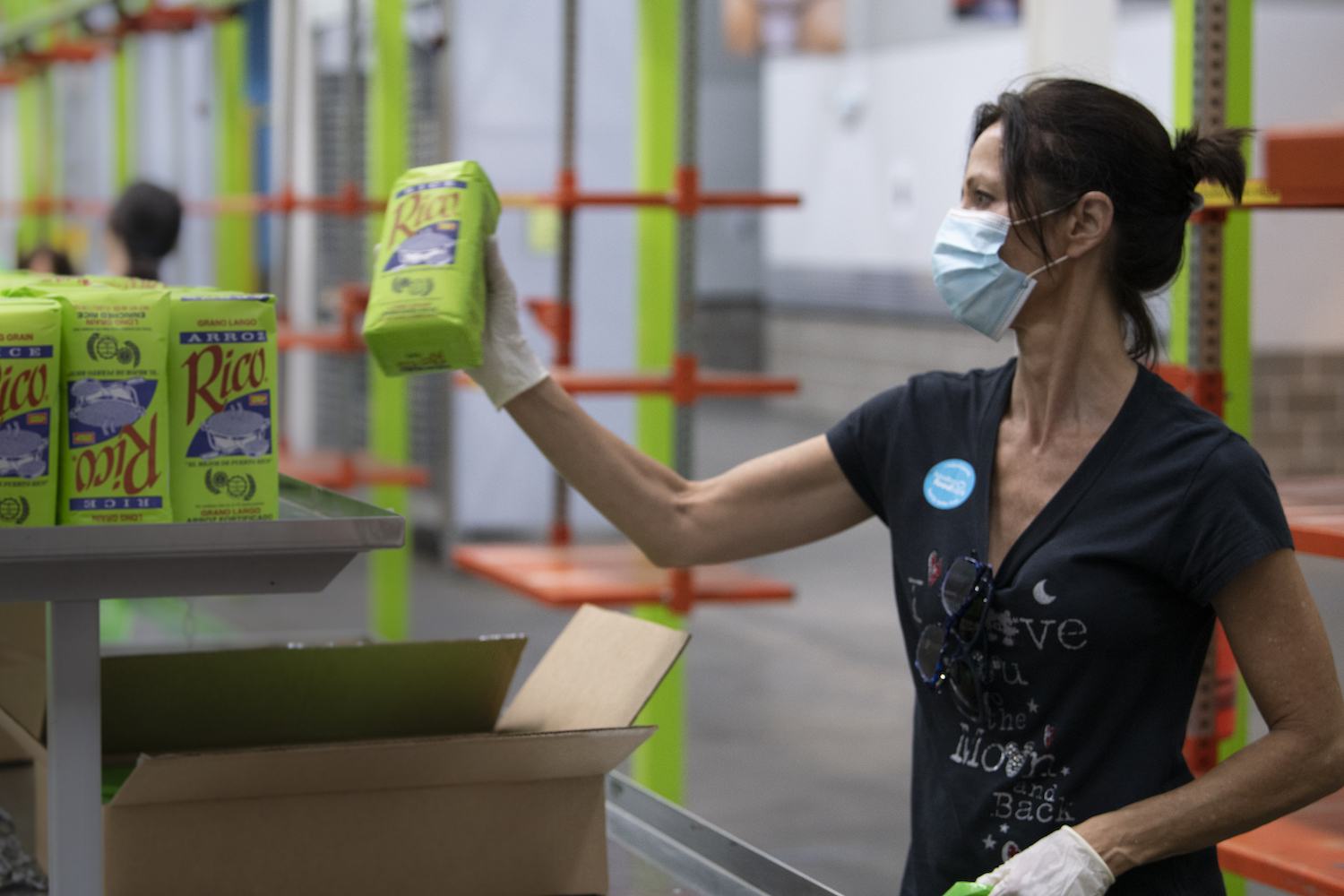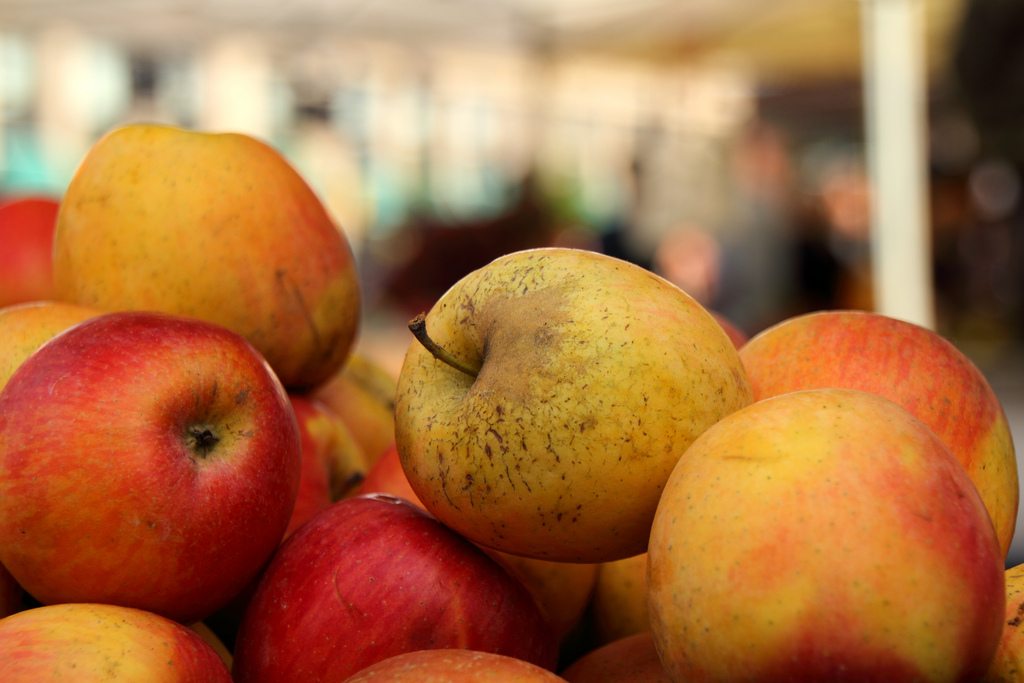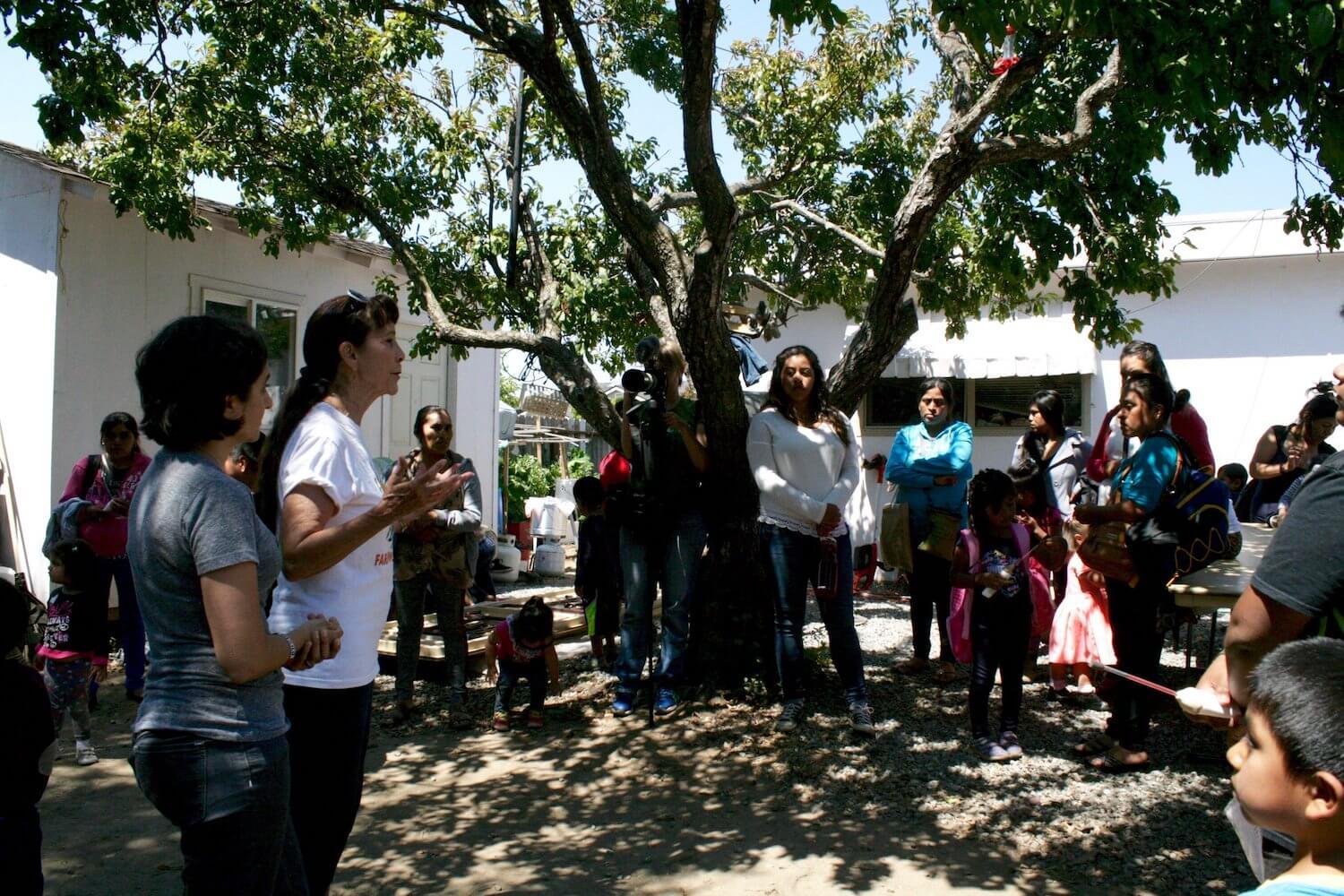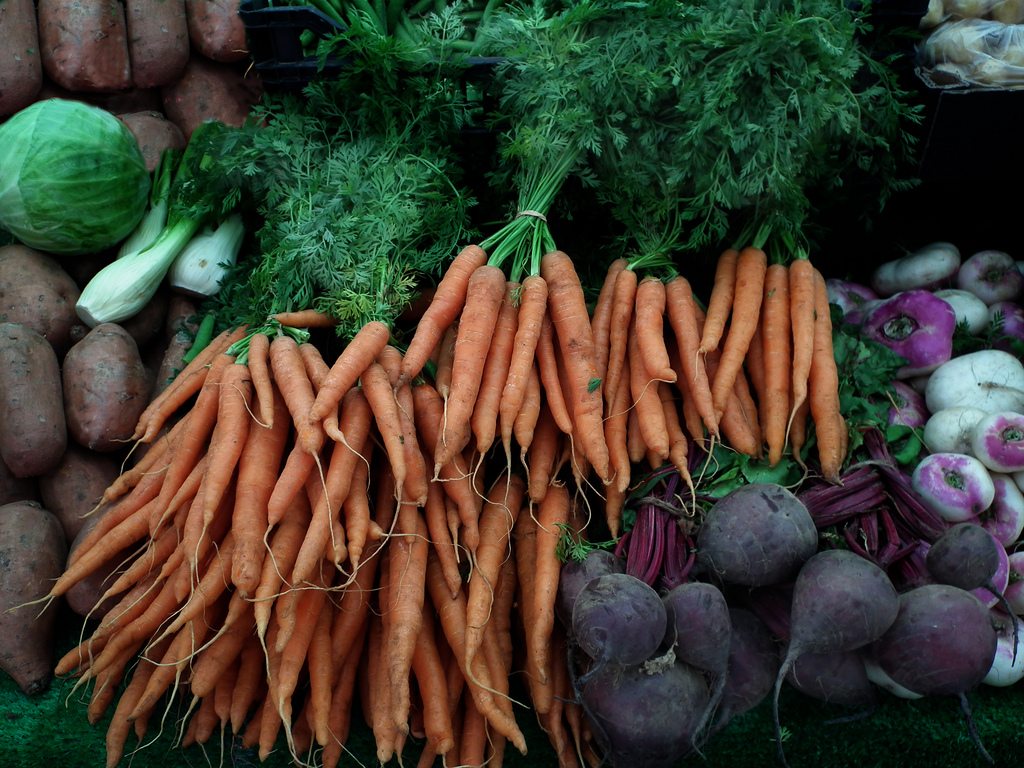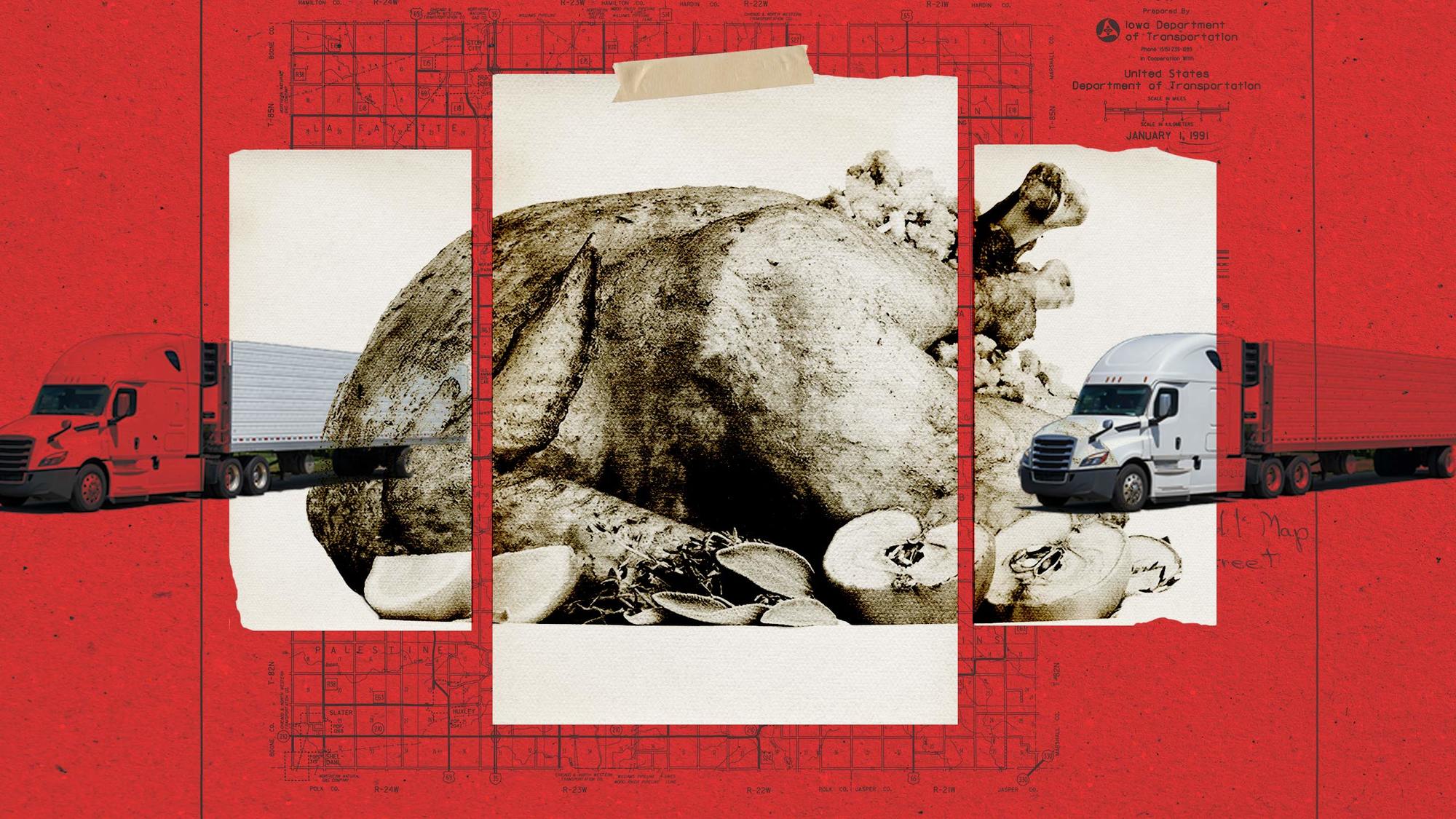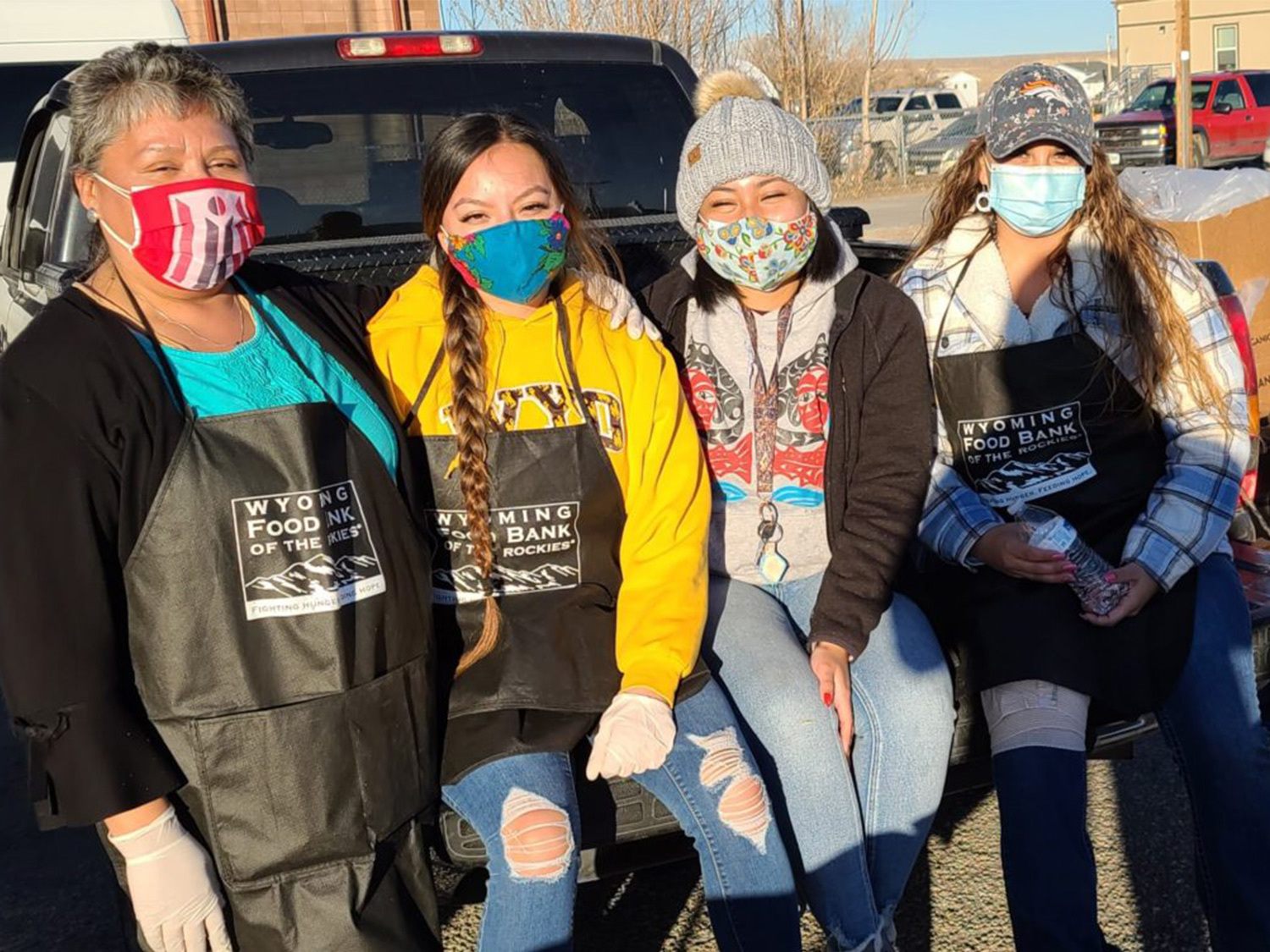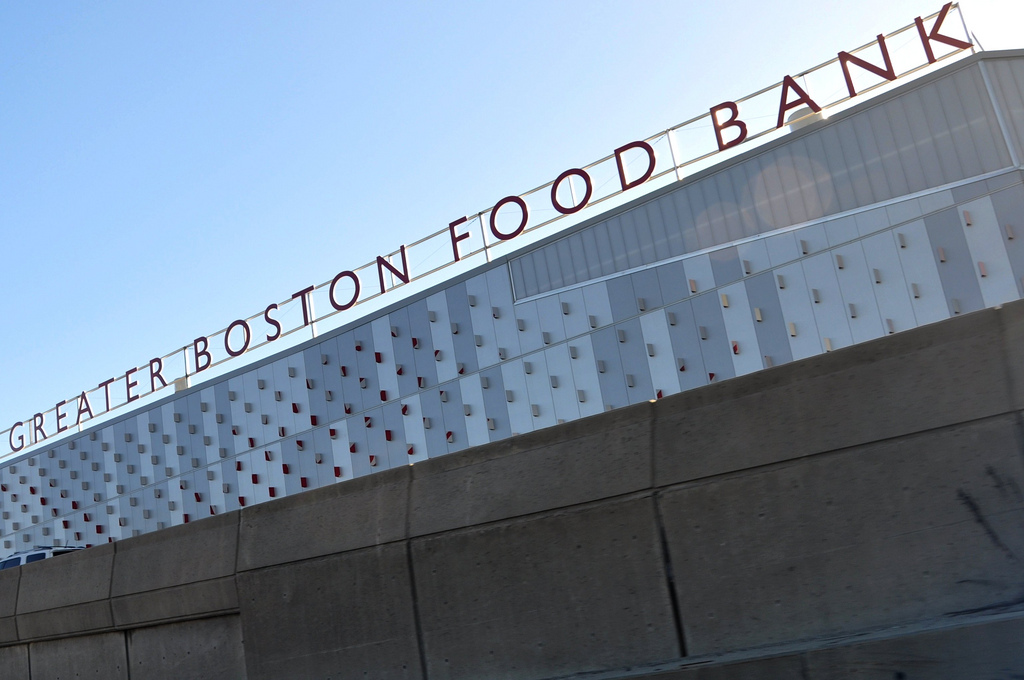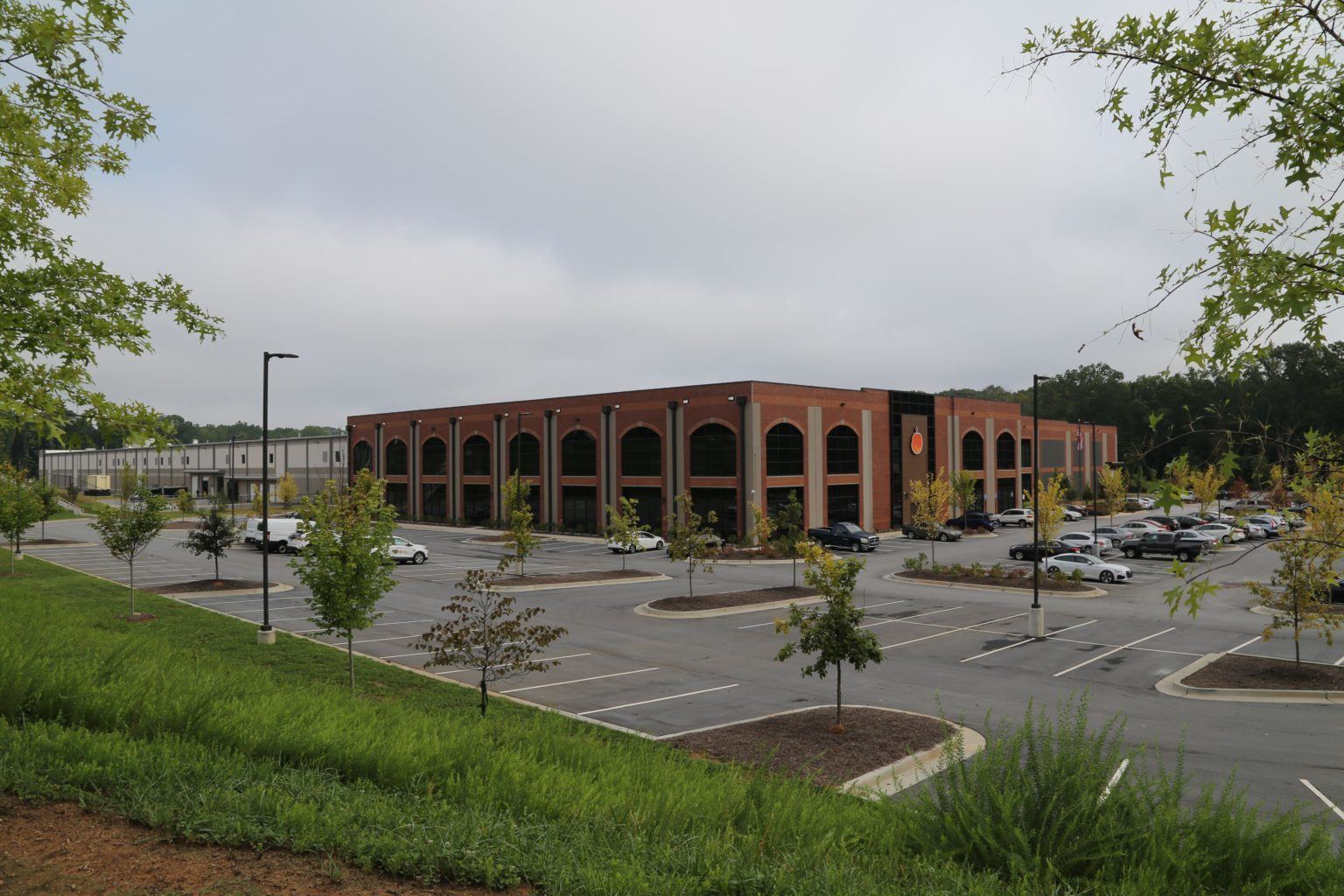
Courtesy of Food Bank News
The Feeding America network reported a 60% increase in demand early in the pandemic, and continues to see steady or increased demand.
This article is republished from Food Bank News, whose mission is to end hunger by advancing best practices in hunger relief. You can read the original article here.
Pictured above: Atlanta Community Food Bank’s new 345,000 square-foot facility has 34 dock doors.
Food banks have a bigger presence in the U.S. than ever.
It’s not just that millions of Americans turned to food banks for the first time during the pandemic. It’s also that food banks are exploding in terms of sheer footprint.
Most prominent is Atlanta Community Food Bank’s new 345,000 square-foot facility, which now serves as the food bank’s headquarters, warehouse and distribution center, replacing two buildings of 130,000 square feet. Roughly the size of five and half football fields, it is being billed as the world’s single largest food bank facility.
The Atlanta food bank is hardly alone:
- Los Angeles Regional Food Bank in 2020 bought a 255,000 square-foot building that it recently opened and continues to renovate.
- Second Harvest Heartland’s new 233,000 square-foot facility near Minneapolis replaces one that was 75,000 square feet.
- Philabundance in the fall leased a 130,000 square-foot building to support food distribution, a year after opening a new 18,000 square-foot culinary training center.
- The Food Bank of Western Massachusetts is developing a 61,000 square-foot property that will double the size of its current location.
- River Bend Food Bank in Iowa is adding a third location and expanding its primary facility, while Community Food Bank of New Jersey is planning a capital campaign to replace its current 80-year-old facility.
Even before the pandemic, food banks were reaching the limits of their capacity, given increased demand for fresh food. Second Harvest Heartland opened its facility just before the pandemic, gaining three times as much freezer and cooler space, as well as a cold clean room that lets it accept greater quantities of bulk meat donations.
Good Shepherd Food Bank in Maine similarly opened a new distribution center in September 2019, augmenting its main 56,000 square-foot warehouse. With three temperature-controlled storage units, the center supports year-round distribution of fresh food in harder-to-reach places.
Even before the pandemic, food banks were reaching the limits of their capacity, given increased demand for fresh food.
Atlanta Community Food Bank was also planning its expansion well before the pandemic, realizing as long ago as 2016 that it would need a significant investment in infrastructure, including a larger facility, freezers, and coolers, to close the meal gap in its region, said Kyle Waide, President and CEO.
By fall of 2018, the food bank had raised capital for the project, including $42 million for the building, trucks, equipment and technology, and $9 million for programming. The building, which has 70,000 square feet of freezer/cooler space and 34 dock doors (compared to six previously), fortuitously opened in March 2020, just before the pandemic.
“There was a lot of serendipity,” Waide said, adding that navigating the pandemic without the new building would have been “really, really challenging.”
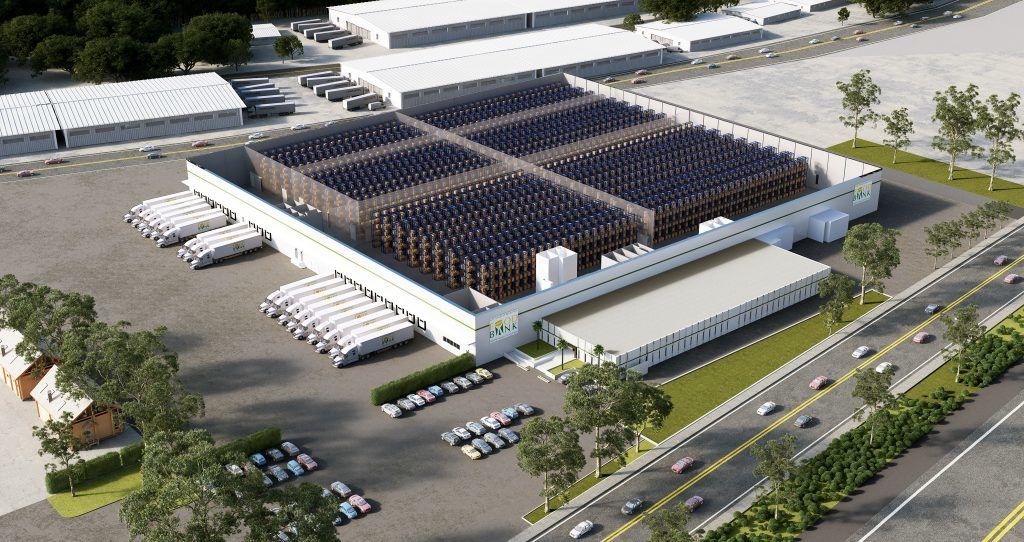
A model of the Los Angeles Regional Food Bank’s new warehouse.
Today, increased demand for food driven by the pandemic is putting even more pressure on food banks. Those in the Feeding America network reported a 60% increase in demand early in the pandemic and continue to see steady or increased demand compared to the month before, according to Feeding America.
At the Food Bank of Western Massachusetts, capacity is so constrained that it must sometimes turn away donations of food, according to its capital campaign literature. Since 2005, the food bank has tripled the amount of food it distributes. River Bend Food Bank is in a similar situation. “We’re three times the size we were in 2014,” said Mike Miller, President and CEO, making the food bank’s planned expansion “more like a right-sizing.”
Within the context of dramatically increased demand, bigger food banks are a no-brainer. But it’s also worth noting that many food banks often talk about the need to address the root causes of poverty so they can put themselves out of business. It’s an end goal that seems further out of reach with every square foot of additional warehouse space.
“Will they use their infrastructure to transform the food system based on the principles of food justice? Or will they use it to continue to reinforce the power of the agro-industrial food system?”
Joshua Lohnes, Food Policy Research Director at the Center for Resilient Communities at West Virginia University, doesn’t see food banks going away, noting that West Virginia’s two food banks are the state’s largest food hubs. In fact, food banks are enjoying an expansion of their social power, along with their footprints, Lohnes said, as they attract more philanthropic dollars and good will from their communities.
“My question to food banks is: ‘How will they wield this social power?’” said Lohnes, who is also a member of the Global Solidarity Alliance. “Will they use their infrastructure to transform the food system based on the principles of food justice? Or will they use it to continue to reinforce the power of the agro-industrial food system? That’s a question we need to continue to pose in the midst of this expansion.”
In fact, some food bankers say, bigger food banking does not present a contradiction in a society that tolerates having large segments of the population remain unable to meet their basic needs even when they work. “It’s now to the point where it’s a conscious choice in the United States that we’re going to have people not able to meet their needs,” said Brian Greene, President and CEO of Houston Food Bank. “And as long as that’s going on, we do this.”
Waide of Atlanta Community Food Bank also sees the need for a “great, robust public policy solution.” Until that happens, the food bank can provide relief by helping to free up more of the family budget. “Families have more resources to address other challenges and invest in the future,” he said.
“We’re going to be investing a lot more in community organizing and supporting grassroots organizations that are really doing on-the-ground organizing.”
Some food banks are expanding, but in ways that are consistent with also transferring power to others. The Greater Chicago Food Depository, for example, has modified its planned expansion of about 60,000 square feet into a smaller, redesigned building that will no longer have meeting space for community groups. The food bank learned during the pandemic that community meetings need to happen out in the communities, said Kate Maehr, Executive Director and CEO, who was named Food Bank News’ Food Bank CEO of the Year in 2021.
“We’re committed to convening, but that convening does not need to happen in our building,” she said.
Good Shepherd Food Bank is also applying lessons learned during the pandemic to its investment plans. “The pandemic really put a spotlight on our complete inadequacy of meeting the needs of communities of color in Maine,” said Kristen Miale, President.
Those communities are not interested in participating in traditional food bank programs, she said. Rather, “we’re going to be investing a lot more in community organizing and supporting grassroots organizations that are really doing on-the-ground organizing.”

